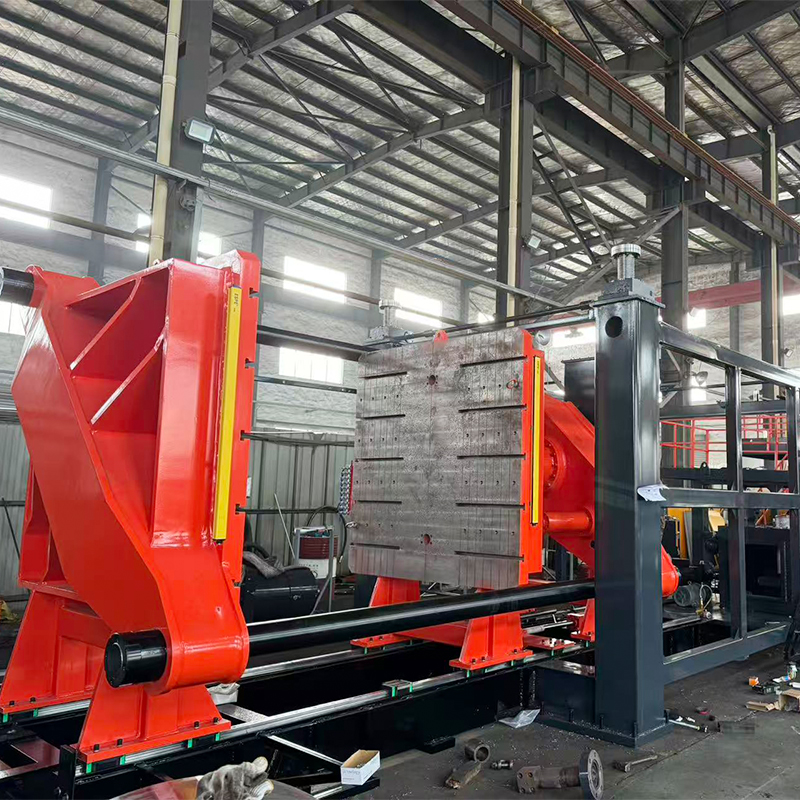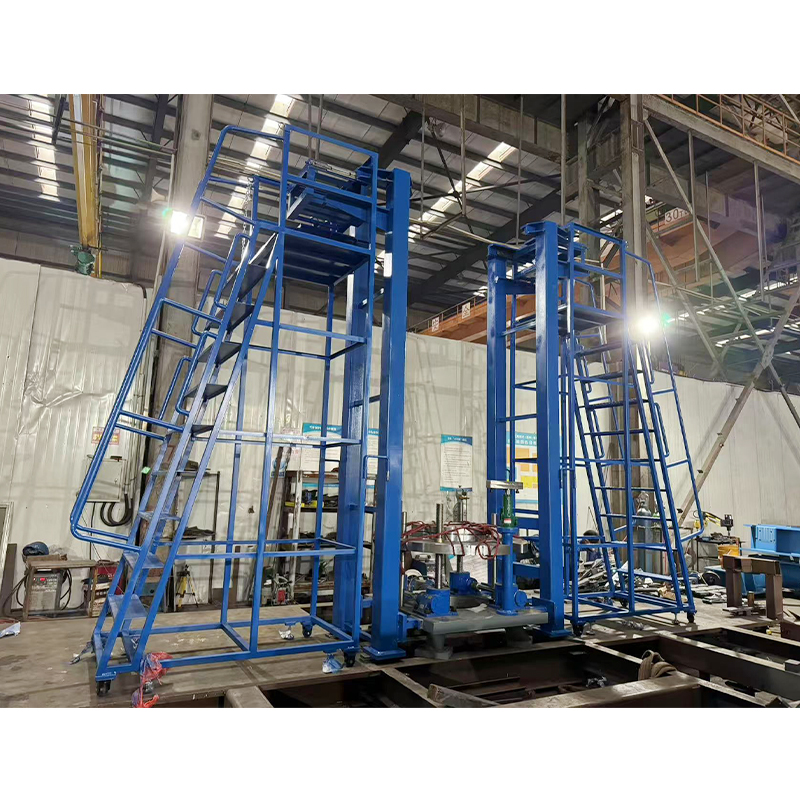How to Optimize the Frame Structure Design of a Handcart to Improve Load-Bearing Stability?
Release Time : 2025-11-17
Handcarts are widely used transport tools in logistics, warehousing, retail, and household settings. The structural design of their core load-bearing component—the frame—directly determines the overall load-bearing capacity and stability of the cart. In practical applications, users often encounter problems such as deformation under load, tipping, and swaying. These problems mostly stem from an unreasonable frame structure. Therefore, optimizing the frame structure design of handcarts is key to improving load-bearing stability.
1. Reasonable Material Selection: Balancing Strength and Stiffness
The frame material is the foundation of structural stability. Traditional handcarts often use ordinary carbon steel, which is inexpensive but prone to rust and heavy. High-strength low-alloy steel or aluminum alloys, on the other hand, achieve lightweight while maintaining strength. In particular, 6061 or 7075 series aluminum alloys have high specific strength and good fatigue resistance, making them suitable for frequent load scenarios. Furthermore, some high-end products introduce carbon fiber composite materials for localized reinforcement, further improving rigidity without significantly increasing weight. Material selection needs to be comprehensively considered in conjunction with the usage environment, expected load, and cost control.
2. Optimizing Geometric Configuration: Application of the Triangular Stability Principle
Structural mechanics shows that the triangle is the most stable geometric shape. In frame design, a triangular support system should be constructed whenever possible. For example, adding diagonal braces between the base frame and the columns to form an "X" or "A" shaped truss structure can effectively distribute vertical and lateral loads and prevent torsional deformation. Simultaneously, the base should adopt a rectangular or trapezoidal layout with a wide wheelbase and low center of gravity to increase the support area and reduce the risk of tipping over. For folding handcarts, key nodes should automatically lock in the unfolded state to ensure a secure structural closure during use.
3. Strengthening Connection Nodes: From Welding to Modular Fastening
The connection points of frame components are often stress concentration areas and high-risk failure points. While traditional welding provides strong overall integrity, it suffers from heat-affected zone embrittlement and difficulty in repair. Modern designs tend to use high-strength bolts, riveting, or snap-fit modular connections, which facilitate assembly and replacement and allow for improved node stiffness through pre-tension control. For critical load-bearing components, such as wheel axle mounting points and handle shafts, reinforcing ribs or localized thickening can be introduced to improve bending and shear resistance.
4. Scientific Layout of Center of Gravity: Enhancing Dynamic Stability
Load-bearing stability is not only related to static load-bearing capacity but also to dynamic balance during movement. The frame design should ensure that the center of gravity of the load is as close as possible to the wheel axle and slightly lower than the handle height to avoid forward or backward tilting. Adjustable baskets, tiered loading platforms, or limiting baffles can be used to guide users to load appropriately. Furthermore, a combination of directional wheels for the rear wheels and omnidirectional wheels for the front wheels, along with a reasonable wheelbase design, can maintain vehicle stability during turns, reducing swaying or tipping due to inertia.
5. Simulation and Testing-Driven Iterative Optimization
Using finite element analysis software, stress distribution, deformation, and vibration characteristics under different load conditions can be simulated in the early stages of design, quickly identifying weak points. For example, virtual tests can be conducted on extreme scenarios such as full-load impact, slope braking, and sharp turns to guide local structural reinforcement. Meanwhile, the physical prototype must pass durability, static load, and dynamic load tests as specified in international trolley standards such as ISO 22887 to verify the optimization effect. A data-driven design closed loop can significantly shorten the development cycle and improve product reliability.
Optimizing the trolley frame structure design is a systematic project that requires the integration of knowledge from multiple disciplines, including materials science, mechanical principles, ergonomics, and manufacturing processes. Through reasonable material selection, stable configuration, reliable connections, center of gravity control, and scientific verification, not only can load-bearing stability be greatly improved, but user experience and product lifespan can also be enhanced.
1. Reasonable Material Selection: Balancing Strength and Stiffness
The frame material is the foundation of structural stability. Traditional handcarts often use ordinary carbon steel, which is inexpensive but prone to rust and heavy. High-strength low-alloy steel or aluminum alloys, on the other hand, achieve lightweight while maintaining strength. In particular, 6061 or 7075 series aluminum alloys have high specific strength and good fatigue resistance, making them suitable for frequent load scenarios. Furthermore, some high-end products introduce carbon fiber composite materials for localized reinforcement, further improving rigidity without significantly increasing weight. Material selection needs to be comprehensively considered in conjunction with the usage environment, expected load, and cost control.
2. Optimizing Geometric Configuration: Application of the Triangular Stability Principle
Structural mechanics shows that the triangle is the most stable geometric shape. In frame design, a triangular support system should be constructed whenever possible. For example, adding diagonal braces between the base frame and the columns to form an "X" or "A" shaped truss structure can effectively distribute vertical and lateral loads and prevent torsional deformation. Simultaneously, the base should adopt a rectangular or trapezoidal layout with a wide wheelbase and low center of gravity to increase the support area and reduce the risk of tipping over. For folding handcarts, key nodes should automatically lock in the unfolded state to ensure a secure structural closure during use.
3. Strengthening Connection Nodes: From Welding to Modular Fastening
The connection points of frame components are often stress concentration areas and high-risk failure points. While traditional welding provides strong overall integrity, it suffers from heat-affected zone embrittlement and difficulty in repair. Modern designs tend to use high-strength bolts, riveting, or snap-fit modular connections, which facilitate assembly and replacement and allow for improved node stiffness through pre-tension control. For critical load-bearing components, such as wheel axle mounting points and handle shafts, reinforcing ribs or localized thickening can be introduced to improve bending and shear resistance.
4. Scientific Layout of Center of Gravity: Enhancing Dynamic Stability
Load-bearing stability is not only related to static load-bearing capacity but also to dynamic balance during movement. The frame design should ensure that the center of gravity of the load is as close as possible to the wheel axle and slightly lower than the handle height to avoid forward or backward tilting. Adjustable baskets, tiered loading platforms, or limiting baffles can be used to guide users to load appropriately. Furthermore, a combination of directional wheels for the rear wheels and omnidirectional wheels for the front wheels, along with a reasonable wheelbase design, can maintain vehicle stability during turns, reducing swaying or tipping due to inertia.
5. Simulation and Testing-Driven Iterative Optimization
Using finite element analysis software, stress distribution, deformation, and vibration characteristics under different load conditions can be simulated in the early stages of design, quickly identifying weak points. For example, virtual tests can be conducted on extreme scenarios such as full-load impact, slope braking, and sharp turns to guide local structural reinforcement. Meanwhile, the physical prototype must pass durability, static load, and dynamic load tests as specified in international trolley standards such as ISO 22887 to verify the optimization effect. A data-driven design closed loop can significantly shorten the development cycle and improve product reliability.
Optimizing the trolley frame structure design is a systematic project that requires the integration of knowledge from multiple disciplines, including materials science, mechanical principles, ergonomics, and manufacturing processes. Through reasonable material selection, stable configuration, reliable connections, center of gravity control, and scientific verification, not only can load-bearing stability be greatly improved, but user experience and product lifespan can also be enhanced.







